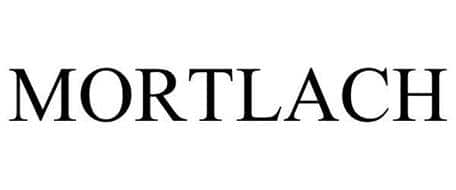Mortlach Distillery Information
The Mortlach Distillery was the first distillery in the town of Dufftown (in Banffshire, in the Speyside region of Scotland), which originally, was named Mortlach (“Mor ulach” in Gaelic, which translates into “valley shaped like a bowl”). The distillery was established in 1823 by James Findlater and his partners Donald Macintosh and Alexander Gordon. It was sold on in 1831, to a gentleman by the name of John Robertson, only to be sold on to A & T Gregory a year later. in 1837, it passed into the hands of brothers James and John Grant, who dismantled the equipment for use in the Glen Grant distillery, established in 1840. Around the time the distillery was shut, with its buildings serving as a church as well as a brewery.
In 1842, John Alexander Gordon became a partner, and the distillery was resurrected and started distilling once again in 1852 under the name of “The Real John Gordon”. In the mid 1850s, a share of the Mortlach distillery was acquired by George Cowie Senior, who was a railway surveyor (though he’d ultimately rise to become the mayor of Dufftown). John Gordon passed away in 1867, leaving Cowie as the sole owner and proprietor. 1887 was the year in which William Grant, who started as a clerk at Mortlach and worked there for over 20 years, established his own distillery (Glenfiddich) nearby. In 1895, Cowie’s son, George Cowie Junior was employed at the distillery. 2 years later, the amount of stills was doubled from 3 to 6, and a railroad was constructed to connect the distillery to the Dufftown station.
In 1897, electricity was installed at Mortlach in order to provide a source of light, and it also saw the addition of hydraulic lifts in the warehouses to make it easier to move heavy loads (and whisky casks, of course). The Distillery was eventually sold by Alexander Cowie to John Walker and Sons in 1923; 100 years after its founding. In 1925, Walker and Sons became part of Distillers Company Ltd, followed later by Scottish Malt Distillers, and eventually Diageo.
In 1964, most of the inside of the distillery was replaced with more modern equipment, and in 1968, the malting floors closed. In 1971, Mortlach switched from direct heating to indirect heating by mean of steam coils. In April 2013, Diageo revealed plans to drastically increase (dobule) the capacity at Mortlach, planning to rebrand it as a premium malt (similar to The Macallan).
Mortlach Whisky
Before the 2013 expansion, pretty much all of the stills at Mortlach were of different shapes and sizes, with perhaps the most curious one of all is the smallest still of all, “The Wee Witchie”. One wash and Spirit still would work as a pair, like in most normal distilleries. The two remaining wash stills work as a pair, with the majority of their low wines then being fed to the larger of the remaining spirit stills. The weaker parts of all the low wines running through the 2 wash stills would be ran through The Wee Witchie no less than three times. This led to a mix of three different strengths of spirit, which would be mixed into casks, where every filling would have to contain a charge from the Wee Witchy.
It is believed this unique process led to the meaty character of Mortlach (earning it the nickname “Beast of a dram”), which made it especially wanted by blenders, with the great majority of it finding its way into Johnnie Walker blends (mainly Black Label).
However, Mortlach does have its own single Matls, though they tend to be rather scarce (and thus pricey). The current core range consists of:
- Mortlach Fauna & Flora, 16 Years Old
Distillery info:
| Name | Mortlach |
| Region | Speyside |
| Logo |  |
| Status | Active |
| Founded | 1823 |
| Water source | Srpings from the Conval Hills |
| Owned by | Diageo |
| Address |
Dufftown +44 (0)1340 822100 |
| Visitor centre | No |
| Website | N/A |
| https://twitter.com/Mortlachwhisky | |
| N/A | |
| Community | N/A |
| Map |
Distillery Setup:
Component |
Capacity |
Quantity |
|---|---|---|
| Mash tun | 12 tonnes | 1 (Stainless steel, semi-Lauter) |
| Washback | 59,000 litres | 6 (Larch) |
| Wash still | 2 * 7,500 + 1 * 16,000 litres | 3 |
| Spirit Still | 1 * 7,000 + 2 * 9,300 litres | 3 |
| Expected yearly output in LPA (Litres of pure alcohol) | 2,300,000 |